- Introduction
- Why Drone Features Matter: Enhancing Functionality and User Experience
- Essential Navigation and Control Features for Drones
- GPS Navigation: The Foundation of Stable Flight
- Intelligent Return-to-Home (RTH): Your Safety Net in the Sky
- Beginner Mode: Ease of Use for New Pilots
- Prioritizing Safety: Key Drone Safety Features
- Obstacle Avoidance: Sensing and Avoiding Collisions
- Geo-fencing: Creating Virtual Boundaries for Safe Flight
- Capturing Stunning Visuals: Camera and Imaging Features
- High-Resolution Camera Quality: Crisp Images and Detailed Videos
- Gimbal Stabilization: Smooth and Professional Footage
- Thermal Imaging: Expanding Drone Applications Beyond Sight
- Power and Performance: Features Impacting Flight and Operation
- Flight Time and Battery Life: Staying Airborne Longer
- Range and Connectivity: Exploring Further Distances
- Payload Capacity: Carrying Equipment and Cargo
- Intelligent and Autonomous Features: The Future of Drones
- Object Tracking: Keeping Subjects in Focus, Automatically
- Gesture Control: Intuitive and Hands-Free Operation
- Autonomous Flight Modes: Pre-Programmed Flight and Tasks
- Choosing the Right Features: What to Consider When Buying a Drone
- Frequently Asked Questions About Drone Features (FAQ)
- Conclusion: Embracing the Feature-Rich World of Drones
Introduction
Drones, also known as unmanned aerial vehicles (UAVs), have rapidly moved from niche technology to mainstream tools, revolutionizing industries and capturing the imagination of hobbyists alike. From breathtaking aerial photography and videography to critical applications in precision agriculture and surveillance, drones offer innovative solutions across countless sectors. This surge in popularity is fueled by remarkable advancements in drone technology, particularly in intelligent flight systems, sophisticated sensors, and increasingly user-friendly interfaces. As drone features become more advanced and accessible, understanding them is key whether you’re a seasoned professional or considering your first purchase.
In this comprehensive guide, we will explore the essential features in drones that contribute to their versatility and power. We’ll delve into how these features enhance functionality, improve user experience, and ultimately define what a drone is capable of achieving. However, these advancements also spark important discussions around safety, privacy, and responsible drone operation – topics we’ll touch upon as well.
Why Drone Features Matter: Enhancing Functionality and User Experience
Understanding drone features is no longer just for tech enthusiasts; it’s crucial for anyone looking to leverage the power of these aerial tools. The capabilities of a drone are directly determined by its features. Want to capture stunning aerial photos like a professional? That depends on camera features. Need a drone that can reliably return to you if you lose signal? That’s a safety feature. Looking for a drone that can autonomously follow a complex flight path for mapping? That’s an intelligent flight feature.
Fundamentally, features in drones dictate their performance, safety, and ease of use. They determine what tasks a drone can effectively perform, how well they perform them, and how enjoyable and safe the overall flying experience will be. Whether you’re interested in creative applications, practical tasks, or simply the joy of flight, knowing the key features of drones is the first step in unlocking their potential.
Essential Navigation and Control Features for Drones
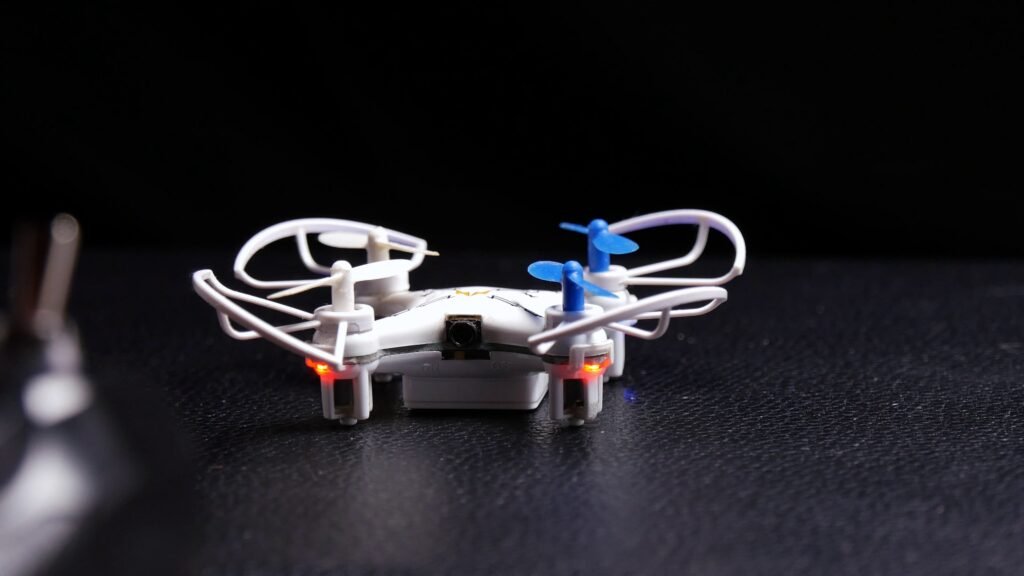
GPS Navigation: The Foundation of Stable Flight
At the heart of modern drone control lies GPS navigation. This fundamental feature allows drones to precisely determine their location and maintain stability and precision during flight. By utilizing satellite signals, GPS navigation enables drones to hover accurately, hold their position in windy conditions, and follow pre-planned routes with remarkable precision. For users, this translates to smoother flights, more stable video recording, and increased confidence in controlling their aircraft.
Beyond basic positioning, GPS is crucial for more advanced navigation features like waypoint navigation. This allows pilots to program specific GPS coordinates into the drone, creating automated flight paths ideal for surveying, inspections, or capturing cinematic fly-by shots.
Intelligent Return-to-Home (RTH): Your Safety Net in the Sky
One of the most vital safety features in drones is Return-to-Home (RTH). Consider RTH as your drone’s emergency backup system. In situations like signal loss or critically low battery, RTH automatically triggers, instructing the drone to autonomously fly back to its takeoff point. This feature significantly reduces the risk of losing your drone and provides peace of mind, especially for beginner pilots.
Modern RTH systems are sophisticated. They often allow users to customize the return altitude, ensuring the drone avoids obstacles on its way back custom return locations. Reliable RTH, often powered by GPS, is a cornerstone of responsible drone operation and a feature you should always prioritize, particularly when starting out.
Beginner Mode: Ease of Use for New Pilots
Understanding that learning to fly a drone has a learning curve, manufacturers often include a Beginner Mode. This invaluable feature is specifically designed to make the initial flying experience less daunting for novices. Beginner Mode typically limits the drone’s flight speed and range, reduces control sensitivity, and often activates additional stability assistance.
By constraining the drone’s operational parameters, Beginner Mode allows new pilots to focus on learning the basics of drone control in a safe and manageable environment. It minimizes the chances of accidental crashes and allows users to gradually build confidence and familiarity before unlocking the full potential of their drone’s features.
Prioritizing Safety: Key Drone Safety Features
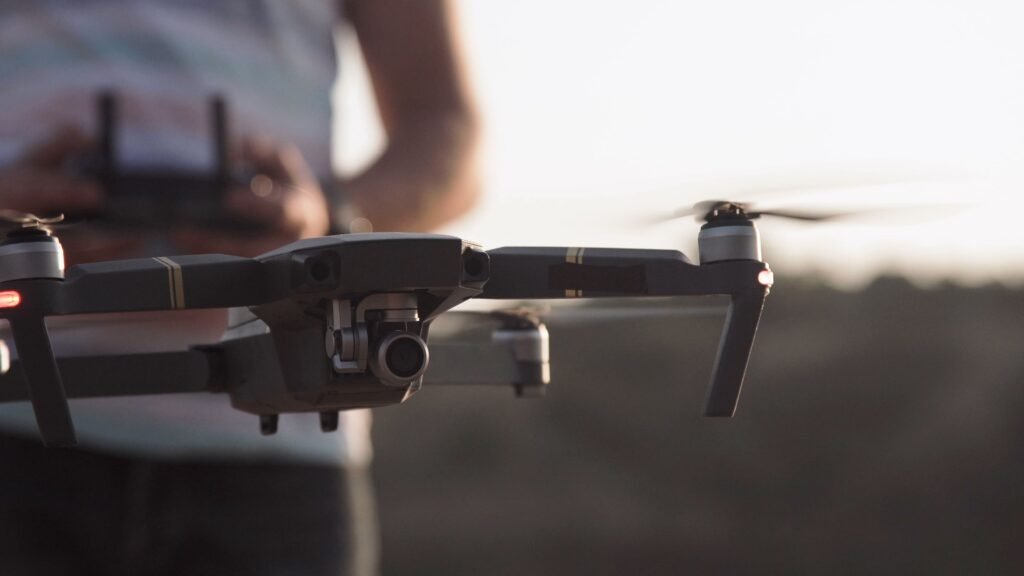
Obstacle Avoidance: Sensing and Avoiding Collisions
Obstacle avoidance is a cutting-edge safety feature that is becoming increasingly common in modern drones. This technology employs a suite of sensors, such as vision sensors, ultrasonic sensors, and infrared sensors, to perceive the drone’s surroundings in real-time (integrates sophisticated sensors). These sensors feed data to intelligent algorithms that enable the drone to detect and autonomously avoid obstacles in its flight path.
Obstacle avoidance dramatically reduces the risk of collisions with trees, buildings, and other objects, enhancing flight safety and protecting your investment. While not foolproof in all situations (complex environments or very thin obstacles can still pose challenges), obstacle avoidance is a significant advancement and a highly desirable safety feature particularly as drones navigate more complex environments.
Geo-fencing: Creating Virtual Boundaries for Safe Flight
Another critical safety feature is geo-fencing (fail-safe mechanisms). Geo-fencing allows users to define virtual boundaries in the drone’s flight software, essentially creating invisible fences in the sky. This feature is incredibly useful for preventing drones from flying into restricted airspace, near airports, or over pre-defined property limits.
By setting up a geo-fence, you ensure your drone remains within a safe and permitted flight zone. If the drone approaches or reaches the virtual boundary, it will automatically stop or return, preventing accidental excursions and contributing to responsible drone operation. Geo-fencing is a proactive safety measure that is especially valuable in urban or regulated environments.
Capturing Stunning Visuals: Camera and Imaging Features
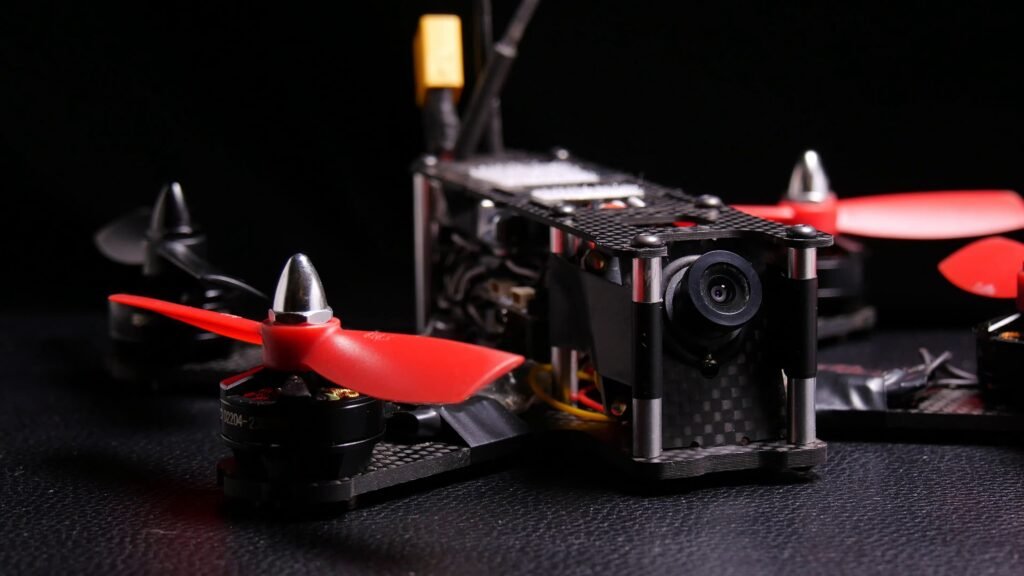
High-Resolution Camera Quality: Crisp Images and Detailed Videos
For many users, especially those interested in aerial photography and videography, camera quality is a primary concern. Modern drones boast impressive camera features, with high-resolution cameras providing stunning aerial imagery. Camera resolution, measured in megapixels, directly impacts the level of detail a camera can capture. Look for drones capable of shooting in at least 4K resolution for professional-looking videos and detailed still photographs.
Beyond resolution, sensor size, lens quality, and image processing capabilities also play significant roles in overall camera quality. Features like adjustable aperture, ISO control, and various shooting modes further enhance creative possibilities for aerial visual content creation.
Gimbal Stabilization: Smooth and Professional Footage
Even the best drone camera is susceptible to vibrations and jerky movements during flight. That’s where gimbal stabilization comes in (design variability). A gimbal is a mechanical system that isolates the camera from the drone’s movements, using motors and sensors to keep the camera perfectly level and steady regardless of how the drone is flying.
Gimbal stabilization is essential for capturing smooth, cinematic video footage and sharp, blur-free still images. Most modern camera drones utilize 3-axis gimbals, which stabilize the camera across pitch, roll, and yaw axes, delivering incredibly stable results even in windy conditions or during dynamic flight maneuvers. This feature is what separates amateur aerial footage from professional-grade visuals.
Thermal Imaging: Expanding Drone Applications Beyond Sight
While most consumer drones focus on standard visual cameras, some advanced models are equipped with thermal imaging capabilities (drone capabilities designs and uses). Thermal imaging cameras detect heat signatures rather than visible light, allowing drones to “see” in darkness, smoke, or through certain types of foliage.
Thermal imaging expands drone applications far beyond photography and videography. It’s invaluable for search and rescue operations (locating people or animals), infrastructure inspections (detecting heat leaks or electrical hotspots), environmental monitoring (observing wildlife), and even precision agriculture (identifying plant stress based on temperature variations). While often found on more specialized drones, thermal imaging showcases the diverse potential of drone features beyond visual capture.
Power and Performance: Features Impacting Flight and Operation
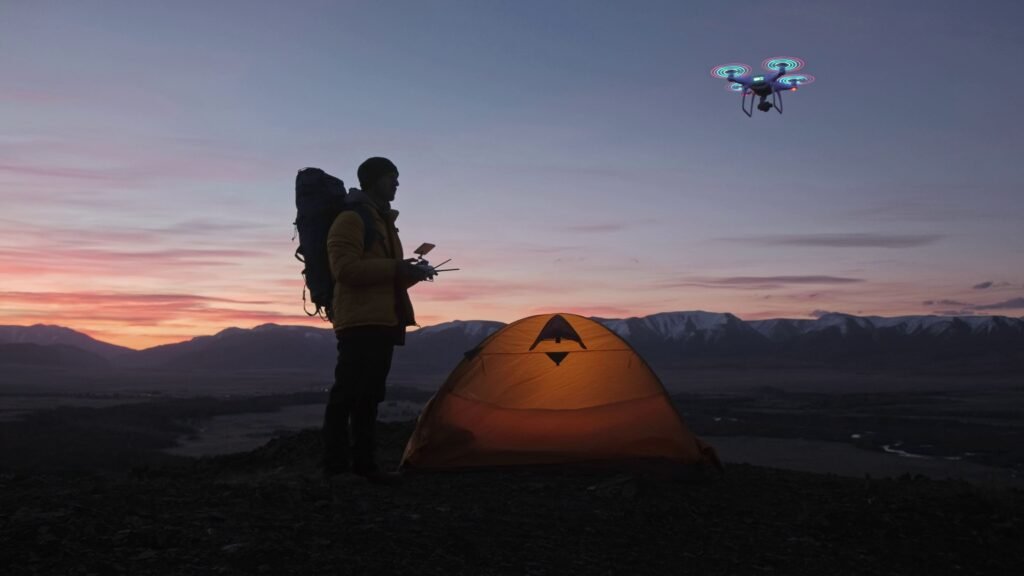
Flight Time and Battery Life: Staying Airborne Longer
A primary practical concern for any drone pilot is flight time. Flight time refers to how long a drone can remain airborne on a single battery charge. This feature is directly tied to battery life and capacity, and is a crucial factor in drone usability. Longer flight times mean more time for capturing footage, conducting inspections, or simply enjoying the flying experience without interruption.
Flight time is affected by various factors including battery capacity, drone weight, wind conditions, and even which features are actively being used (e.g., obstacle avoidance consumes power). Modern drones are increasingly employing smart batteries with optimized energy management systems to maximize flight time. When comparing drones, always pay close attention to advertised flight times, but also be aware of real-world factors that can influence actual duration.
Range and Connectivity: Exploring Further Distances
Range and connectivity define how far a drone can operate over ranges exceeding 5,000 meters from the pilot’s controller. Range is determined by the strength and reliability of the communication link between the drone and the remote control, which is typically achieved through radio signals or enhanced Wi-Fi. A greater range expands the operational possibilities, allowing for flights over larger areas and in more remote locations.
Factors affecting range include signal interference, environmental obstacles, and regulatory limitations. Manufacturers often specify a maximum control range for their drones, but it’s crucial to understand that real-world range can vary. Reliable connectivity is essential for maintaining control and receiving real-time video feedback (FPV – First Person View) during flight.
Payload Capacity: Carrying Equipment and Cargo
While many consumer drones are designed primarily for cameras, payload capacity becomes a critical feature for professional and industrial applications. Payload capacity refers to the maximum weight a drone can carry in addition to its own components. This feature dictates the types of equipment or cargo a drone can lift, such as specialized sensors, delivery packages, or inspection tools.
Drones with higher payload capacities are used in diverse fields like agriculture (spraying systems), construction (lifting tools), and logistics (package delivery). The design and power of the drone, particularly its motors and frame, directly influence its payload capacity. For users needing to carry more than just a camera, payload capacity is a key specification to consider.
Intelligent and Autonomous Features: The Future of Drones
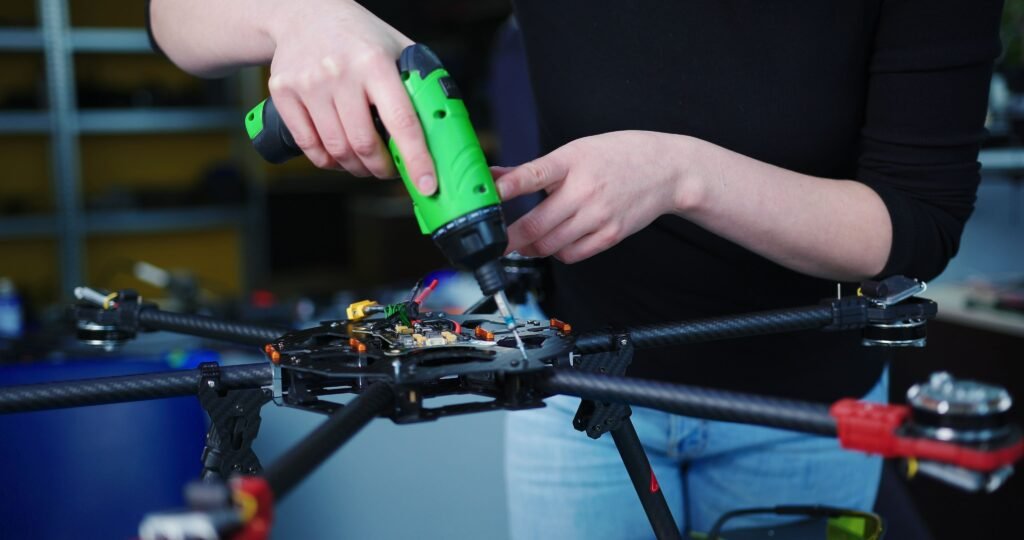
Object Tracking: Keeping Subjects in Focus, Automatically
Object tracking is an advanced intelligent feature that brings a new level of automation to aerial filming and tracking (smart features in drones). With object tracking, you can select a subject – a person, vehicle, or object – and the drone will autonomously follow it, keeping it centered in the frame.
This feature is powered by computer vision and AI algorithms that allow the drone to recognize and dynamically track the chosen subject, even as it moves. Object tracking simplifies complex filming scenarios, enabling users to capture dynamic shots of moving subjects without requiring expert piloting skills. It’s perfect for following athletes, vehicles, or even wildlife from the air, adding a professional touch to aerial videography.
Gesture Control: Intuitive and Hands-Free Operation
For an extra touch of user-friendliness and a futuristic feel, some drones incorporate gesture control (smart features in drones). Gesture control allows you to control certain drone functions using hand gestures recognized by the drone’s onboard camera. Common gesture control features include taking photos, starting/stopping video recording, and even directing the drone to move in certain directions (within a limited range).
Gesture control provides an incredibly intuitive and often fun way to interact with your drone. It’s especially convenient for capturing selfies or group photos without needing to hold the remote controller. While generally a supplementary control method rather than the primary one, gesture control showcases the innovative user-friendly features being integrated into modern drones.
Autonomous Flight Modes: Pre-Programmed Flight and Tasks
Pushing the boundaries of automation further, autonomous flight modes represent the pinnacle of intelligent drone features (smart features in drones). These modes enable drones to execute complex flight maneuvers and tasks with minimal or no direct pilot input after initial setup. Examples of autonomous flight modes include:
- Circle Mode: The drone automatically orbits a chosen point of interest, keeping the camera focused on it – perfect for panoramic shots.
- Follow Me Mode: Similar to object tracking but often relying on GPS, the drone follows the pilot’s location (determined by their smartphone or controller).
- Pre-programmed Missions: Users can plan detailed flight paths with multiple waypoints, specifying altitude, speed, and camera actions at each point – ideal for mapping, inspections, and repeatable data collection tasks.
Autonomous flight modes significantly expand the capabilities of drones, enabling them to perform sophisticated tasks with ease and precision. They demonstrate the ongoing evolution of drone features towards increasingly intelligent and automated aerial solutions.
Choosing the Right Features: What to Consider When Buying a Drone
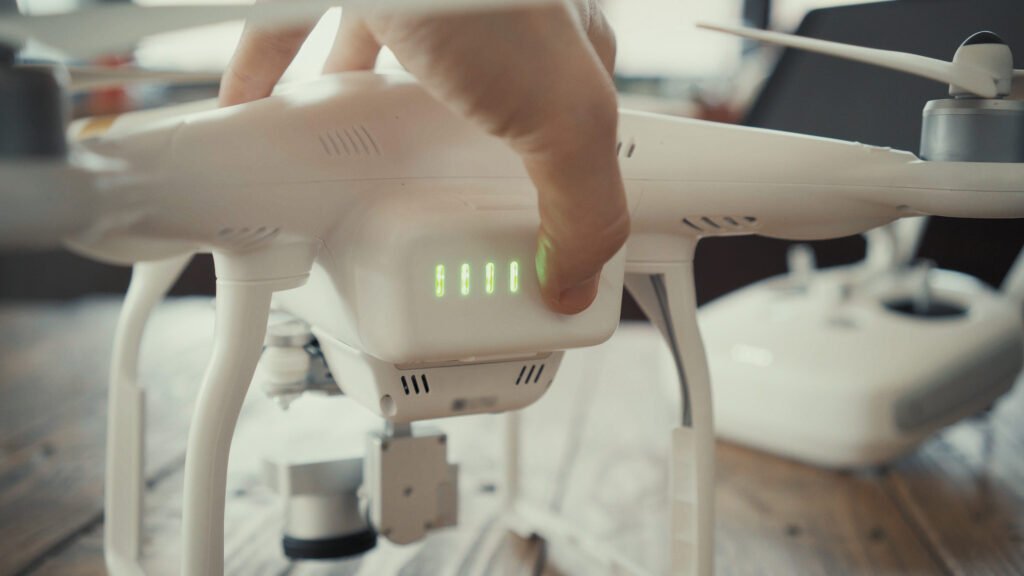
Purchasing a drone can be exciting, but with so many models and features available, it’s important to make an informed decision. Here’s a breakdown of key considerations to guide you in choosing the right drone, echoing common user questions like “What to look for when buying a drone?”:
- Camera Quality: If aerial photography or videography is your goal, prioritize camera features like resolution (4K or higher recommended), sensor size, and gimbal stabilization. (See section: Capturing Stunning Visuals: Camera and Imaging Features).
- Flight Time & Battery: Consider how much flight time you need per session. Longer flight times offer more convenience and creative opportunities. Compare battery specifications and factor in realistic flight times (See section: Power and Performance: Features Impacting Flight and Operation).
- Safety Features: Especially for beginners, prioritize drones with robust safety features like obstacle avoidance, Return-to-Home (RTH), and geo-fencing. These features greatly enhance flight safety and reduce the risk of accidents (See section: Prioritizing Safety: Key Drone Safety Features and Essential Navigation and Control Features for Drones).
- Navigation and Control (GPS & Beginner Mode): Reliable GPS navigation ensures stable flight and unlocks advanced features. Beginner Mode is highly recommended for first-time pilots, simplifying the learning process (See section: Essential Navigation and Control Features for Drones).
- Range & Connectivity: If you plan to fly further afield, consider drones with a longer control range. Stable connectivity is crucial for maintaining control and video feed (See section: Power and Performance: Features Impacting Flight and Operation).
- Ease of Use/Beginner-Friendliness: Look for drones with user-friendly controls, user-friendly apps, and features that simplify flight operation, especially if you are new to drones (Refer to Beginner Mode in Essential Navigation and Control Features for Drones). User reviews often highlight beginner-friendliness [drones for first time users] and [getting started with drone tech].
- Durability and Build Quality: A robust and well-built drone is more likely to withstand minor bumps and last longer. Check reviews for information on build quality and reliability.
- Purpose/Intended Use: Clearly define what you intend to use the drone for (photography, recreation, inspections, etc.). Your intended purpose will heavily influence which features are most important (Relate to section: Why Drone Features Matter: Enhancing Functionality and User Experience).
- Budget: Drones are available in a wide price range. Set a realistic budget that considers your needs and desired features. Remember to factor in the cost of extra batteries and accessories (Refer to section: Buying Drones). Is a cheap drone worth it? That depends on your feature needs vs. budget!
Frequently Asked Questions About Drone Features (FAQ)
- Q: What are the most important features to look for when buying a drone?
- A: For most users, key features include good camera quality (at least 4K), reliable GPS and Return-to-Home, sufficient flight time (20+ minutes is ideal), and relevant safety features like obstacle avoidance. Beginner-friendliness is also crucial for new pilots. Your specific “must-have” features depend on your intended use and budget.
- Q: What are the special features of drones that make them unique?
- A: Drones are unique due to their ability to fly autonomously and access aerial perspectives. Special features include intelligent flight modes (like object tracking and waypoint navigation), advanced sensors (like thermal cameras and obstacle avoidance), and their increasing portability and ease of use compared to traditional aircraft.
- Q: How do obstacle avoidance features actually work on drones?
- A: Obstacle avoidance systems use a combination of sensors (vision, ultrasonic, infrared) to “see” their surroundings. These sensors feed data to onboard processors and algorithms that interpret the environment and instruct the drone to autonomously steer around obstacles in real-time, preventing collisions.
- Q: What flight time should I expect from a drone, and how does battery life relate?
- A: Advertised flight times vary widely, typically from 15 to 30+ minutes for consumer drones. Flight time is directly dependent on battery capacity and efficiency. Real-world flight times can be slightly less than advertised due to wind, flying style, and feature usage. Aim for a drone with at least 20 minutes of flight time for a better experience.
- Q: Are safety features like Return-to-Home (RTH) and Geo-fencing really necessary, or just nice to have?
- A: Safety features like RTH and geo-fencing are highly recommended and considered necessary, especially for beginners and for flying in areas with potential risks. RTH is a crucial failsafe to prevent drone loss, and geo-fencing helps ensure you fly within safe and legal boundaries. They are not just “nice to have” – they contribute significantly to responsible and safe drone operation.
- Q: For someone new to drones, what are the must-have features for a beginner-friendly drone?
- A: Must-have features for beginner drones include: Beginner Mode (speed and range limits), GPS for stable hovering, Return-to-Home (RTH), and user-friendly controls and apps. While obstacle avoidance is great, it’s often found on slightly more expensive models; prioritize the other features first for a safe and enjoyable learning experience.
Conclusion: Embracing the Feature-Rich World of Drones
From basic GPS and stable flight to advanced obstacle avoidance, intelligent tracking, and high-resolution cameras, the features in drones have transformed them into incredibly versatile tools. Understanding these drone features is essential for anyone wanting to purchase, operate, or simply appreciate the capabilities of these remarkable flying machines. As technology continues to advance, we can expect even more innovative features to emerge, further expanding the horizons of what drones can achieve and solidifying their place in numerous aspects of our lives.
Explore Dealibrium’s deals to discover the latest drone models and deals. Share this guide with anyone interested in learning more about the exciting world of drone features!



